YOU'VE GOT SNAIL MAIL
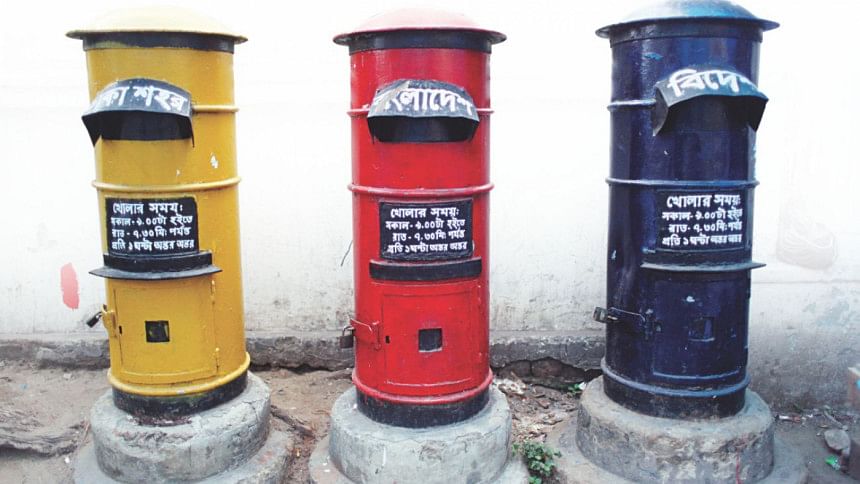
An average day at the General Post Office (GPO) in Gulistan starts as early as 7:30 in the morning. Busloads of employees arrive at the massive, red brick building, complete with long corridors and high ceilings, and find their way to their respective departments to prepare for the mail to arrive.
Around 8:30 am, the day's mail is delivered in front of the mail receiving rooms, inside what seems like endless numbers of brown jute bags, bursting at the seams.
"Most of the letters we get nowadays are official letters," says Abul Khair, Inspector (supervisor) at the GPO. "We may not get personal letters as much, but a majority of bank correspondence, insurance paperwork, answer sheets for board exams (being sent to examiners) and high court documents are mailed through our office. Mail from private organisations also arrives in droves-- just today the Titas Gas office dropped off 40,000 letters to be distributed."
Once the letters are taken into the mail receiving room, they are stamped and sorted for delivery. This room is spacious and can accommodate up to 100 employees. Unfortunately due to short staffing, only 50 people are seen toiling away. Of these, four sit at a large table stamping the letters with seals bearing the day's date, which effectively cancels the stamps, preventing from being re-used.
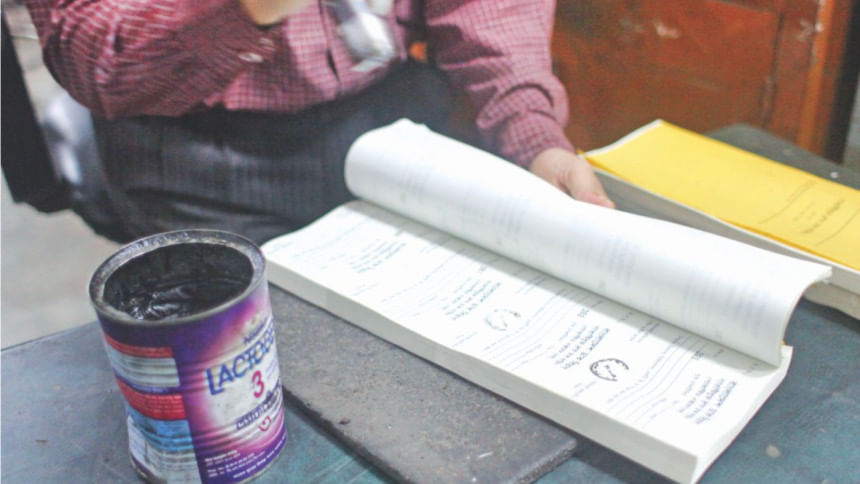
The letters, which arrive from the Kamlapur Railway Mail Service (RMS) go through preliminary sorting before they are sent to this office. Once they are sealed, the letters are sorted, according to the fastest, most effective route for each post-man. Each of the 68 post-men employed here have their own shelf in this room, where their day's work awaits them. "Due to understaffing, the postmen themselves help with the sorting process.
The parcels, registered mail and money orders are received in different places but are sorted in the same area," says Abul Khair, "From this office; we deliver all the letters that are sent to areas with the postal code 1000. These include, Bangla Motor, Paltan, Ramna, the Dhaka University area, the BUET area, the City Corporation, Shantinagar etc."
Once the sorting process is complete, the express and registered mail are taken to a separate room where receipts are issued and tracking numbers are assigned to them. This process is done by hand and records are stored for about 6 months in the post office archives, during which these letters can be tracked and complaints regarding them, filed. Under this department, foreign mail is also handled. Each package or letter is assigned a tracking barcode and the records are computerised.
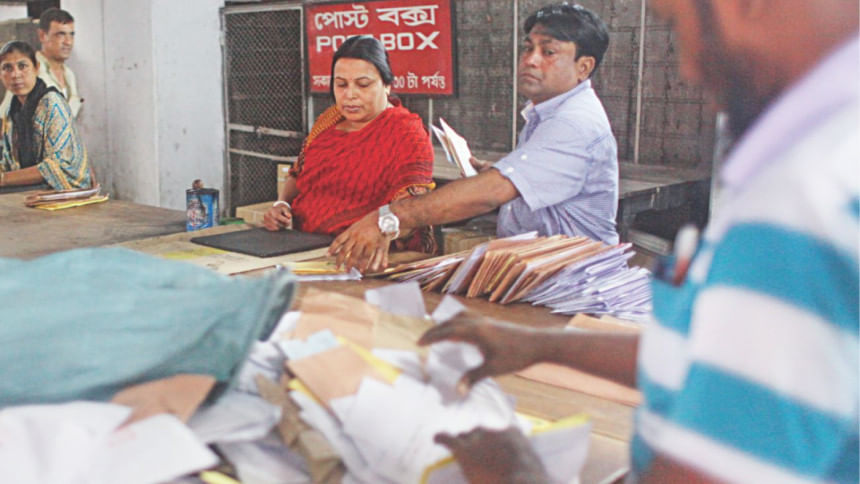
Down the maze of hallways is yet another room, where passports are received and sorted by area. "These are sent to us by the Passport Office in Agargaon and we send them out to the various Ansar Offices in different districts through the RMS and to the appropriate embassies if they are meant for those on missions abroad," says Khair.
While the outgoing mail is being sorted at the back of the building, around 9am, it is time to receive incoming mail at the front counters. These counters are housed in a large atrium with sloped ceilings and are buzzing with activity as the employees receive and stamp piles of in-coming letters and parcels.

Facing these counters, are a number of large red mailboxes that receive letters that have already been stamped and enveloped by the customers themselves. "We now use stamp machines instead of paper stamps in order to save time," says Husne Ara, as she mans one of these counters. "Over the 18 years I have worked here, we have rarely upgraded our technology, but these machines have been a good addition," she says.
At a different counter, a service known as the Electric Money Order Service (EMDS), similar to BKash, started in 2010, is provided. This service is in collaboration with Banglalink and can be used to transfer money all over the country using just about any network. "We charge Tk 27 for the first Tk 1,000 transferred, with a ten Taka increase for every Tk 1,000 sent from there on," says Abul Khair.
A doorway to the left of the atrium leads one to the rest of the sections on the ground floor of the GPO, one of which includes the Pension department. "Pensions for all postal and TNT employees can be collected from this department," says Abul Khair, "These records are now computerised as the enormous volume of paperwork is difficult to keep track of," he says.
The most profitable section of the GPO, is their Sanchaypatra (bonds) department. Hundreds line up at service windows of this section, and yet more wait on the balcony outside to either purchase, draw interest on their existing bonds, or collect maturing bonds. "We sell bonds issued by the Ministry of Finance, and we have our own projects as well," says Badru-Zaman, manager of this department. These mature in one to five years, depending on the type you purchase."
The Philatelic Bureu comes next, and this department holds collectible stamps issued over the decades. This office publishes catalogues with the market price of the stamps, and interested buyers are allowed to bid on these at auctions organised by the department.
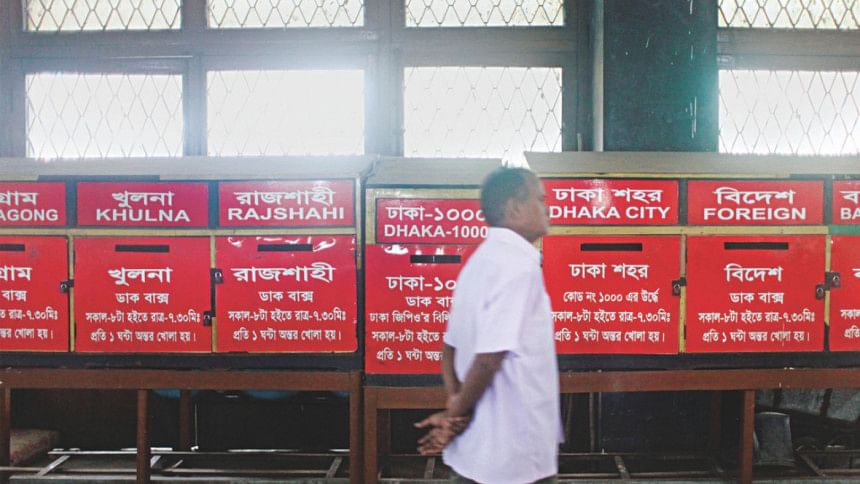
Last but not least, there is the GPO museum, located on the second floor of this remarkable building. A walk through this museum shows us the interesting history of the evolution of postal services in Bangladesh– from floating offices on boats, to open tin-sheds and finally, to the concrete buildings we see today, where countless hours are invested, so we can get our bills, bank statements, invitations to office galas or weddings and important care packages from loved ones, in a timely fashion.

 For all latest news, follow The Daily Star's Google News channel.
For all latest news, follow The Daily Star's Google News channel. 


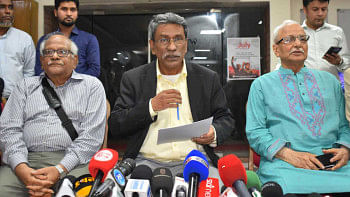
Comments